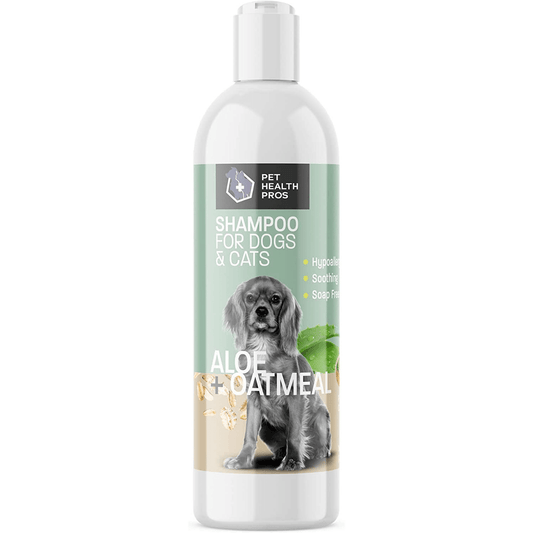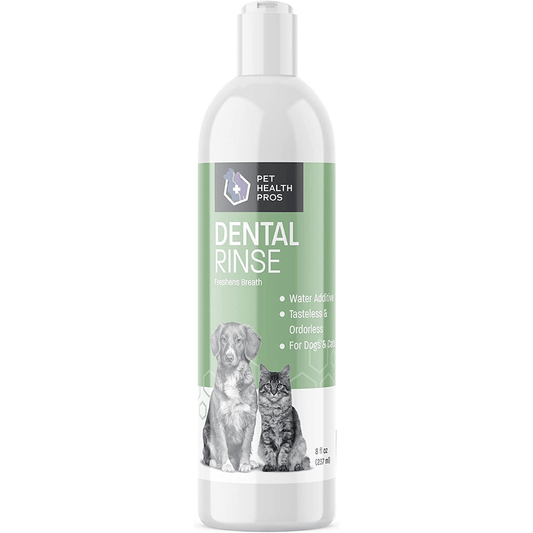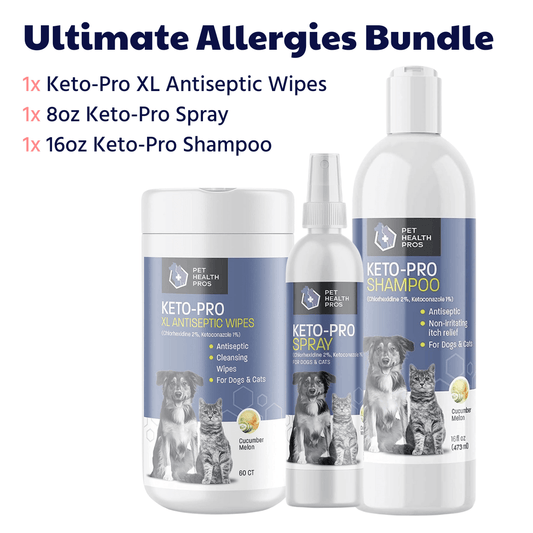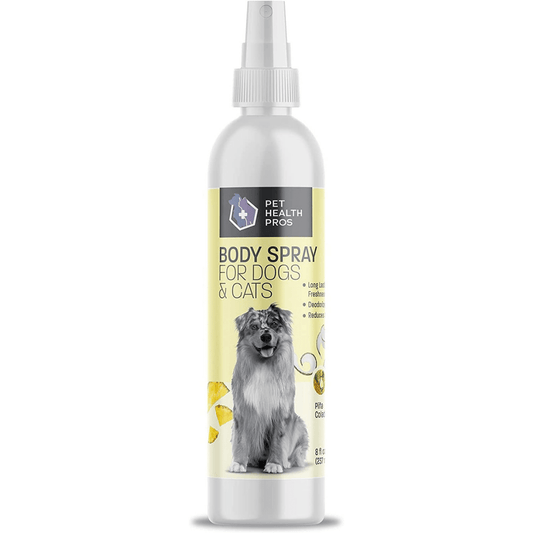Expressing your dog's anal glands is an important aspect of maintaining their health and comfort. By understanding the signs that indicate the need for expression and following a proper process, you can ensure your dog's well-being. This step-by-step guide will help you navigate the anal gland expression process safely and effectively, while also highlighting common mistakes to avoid.
Key Takeaways
- Regularly check for signs that indicate your dog's anal glands need expression to prevent discomfort and potential health issues.
- Prepare a calm environment and gather the necessary supplies before expressing your dog's anal glands to ensure a smooth process.
- Follow proper positioning and gentle techniques during anal gland expression to avoid causing discomfort or injury to your dog.
- Provide post-expression care to your dog, such as cleaning the area and observing for any signs of infection or irritation.
- Avoid common mistakes like overlooking signs of discomfort and using incorrect pressure or tools during the anal gland expression process.
Understanding the Importance of Expressing Your Dog's Anal Glands
Signs that Your Dog's Anal Glands Need Expression
Recognizing when your dog's anal glands require attention is crucial for their comfort and health. Dogs may scoot their bottoms across the floor, a behavior often mistaken for a simple itch but typically indicates the need for anal gland expression. Other signs include excessive licking of the area, a foul odor, and visible swelling near the anus.
Consistency in monitoring your dog's behavior and physical symptoms is key to identifying glandular issues early. If you notice any of these signs, it's important to address them promptly:
- Scooting on the ground
- Excessive licking of the anal area
- Foul-smelling secretion
- Swelling or bumps near the anus
- Difficulty defecating or changes in stool consistency
It's essential to approach anal gland expression with care, as improper handling can lead to discomfort or infection. Always consult with a veterinarian if you're unsure about the process or if your dog shows signs of severe discomfort.
If these symptoms persist or worsen, it's imperative to seek veterinary care, as they could be indicative of more serious conditions. Anal gland issues, if left untreated, can lead to infections or abscesses, which may require surgical intervention.
Potential Risks of Ignoring Anal Gland Issues
Ignoring the health of your dog's anal glands can lead to significant discomfort and potential health risks. Infection or abscess formation is a serious concern, as untreated glands can become impacted and infected, leading to more invasive treatments or surgery.
Impaction is another risk, where the glands become overly full and cannot empty naturally. This can cause your dog to scoot, lick excessively, or even bite at the area due to discomfort.
Chronic issues with anal glands can also lead to systemic health problems, as the infection can spread to other parts of the body.
To understand the severity, consider the following consequences of neglect:
- Persistent discomfort and pain for your dog
- Increased risk of infections and abscesses
- Potential for costly medical interventions
- Stress and anxiety for both pet and owner
It is crucial to monitor your dog's anal gland health and seek veterinary care if you notice any signs of trouble. Regular maintenance can prevent these issues and ensure your dog's comfort and well-being.
Preparing for the Anal Gland Expression Process
Gathering the Necessary Supplies
Before you begin the process of expressing your dog's anal glands, it is crucial to have all the necessary supplies on hand. Having the right tools at your disposal will ensure a smooth and stress-free experience for both you and your pet. You will need a pair of disposable gloves to maintain hygiene, some paper towels or a clean cloth for any mess, and a warm, damp washcloth to clean your dog afterwards.
Gloves are essential to prevent the spread of bacteria and to keep your hands clean. Paper towels or a clean cloth will be used to catch any secretions during the expression process. Lastly, the warm, damp washcloth will help to soothe your dog's area and ensure they are comfortable and clean post-procedure.
It's important to be gentle and patient throughout the process to minimize discomfort for your dog and to make the experience as positive as possible.
Ensure that you have a proper disposal method for the used materials. A small trash bag or bin should be readily available to dispose of the gloves and paper towels immediately after use. This will help maintain a clean environment and make the cleanup process much easier.
Creating a Calm Environment for Your Dog
Before beginning the anal gland expression process, it's crucial to ensure your dog is as relaxed as possible. A calm dog is more receptive to handling, which can make the procedure smoother for both of you. Start by choosing a quiet room where your dog feels safe and is free from distractions.
Soft music or white noise can help mask any startling sounds, and familiar blankets or toys may provide additional comfort. Here's a simple checklist to help you create a calming atmosphere:
- Select a quiet, familiar space
- Use soft music or white noise
- Lay out a comfortable blanket
- Have your dog's favorite toys nearby
- Ensure the room is at a comfortable temperature
Remember, a peaceful environment not only calms your dog but also helps you stay focused and gentle during the expression process. Patience and a gentle touch are key to a successful and stress-free experience for your dog.
Step-by-Step Guide to Safely Expressing Your Dog's Anal Glands
Proper Positioning for Anal Gland Expression
Before beginning the anal gland expression, it is crucial to ensure your dog is in the correct position. This not only facilitates the process but also minimizes discomfort for your pet. Place your dog on a stable, flat surface where you have good access to the rear end. Smaller dogs can be placed on a table or countertop, while larger dogs may be more comfortable on the floor.
Gently lift the tail to expose the anus and the glands located at the four and eight o'clock positions relative to it. Ensure your dog is calm and not struggling, as this can make the process more difficult and stressful for both of you.
Remember, the key to a successful expression is a combination of the correct technique and the right positioning.
Follow these steps to position your dog correctly:
- Choose a suitable location that is easy to clean.
- Position your dog standing or lying on its side.
- Lift the tail gently to access the glands.
- Keep your dog still and reassured throughout the process.
Techniques for Gentle and Effective Expression
Expressing your dog's anal glands requires a gentle touch and patience. Ensure your dog is comfortable and relaxed before you begin, as tension can make the process more difficult for both of you. Start by wearing gloves and applying a lubricant to your finger. Gently insert your finger into the dog's anus, no more than an inch, and feel for the small, pea-sized glands located at the four and eight o'clock positions relative to the anus.
Use a gentle squeezing motion to apply pressure to the glands, working from the outside in. The goal is to milk the glands, causing them to release their contents. It's important to be consistent with the pressure but never forceful. If you encounter resistance or your dog shows signs of pain, stop immediately and consult a veterinarian.
After expressing the glands, reward your dog with a soothing activity, such as a short walk or a session of aromatherapy. This can help them relax and recover from the experience.
Remember, if at any point you feel unsure or uncomfortable with the process, seek professional help. A veterinarian or a trained groomer can demonstrate the technique and provide guidance.
Post-Expression Care for Your Dog
After expressing your dog's anal glands, it's crucial to monitor them for any signs of irritation or infection. Ensure your dog is comfortable and observe their behavior closely for the next few hours. If you notice any redness, swelling, or your dog continues to scoot, it may be necessary to consult your veterinarian.
Hygiene is paramount post-expression. Clean the area around the anus with a soft, damp cloth and dry it thoroughly to prevent any moisture-related complications. Additionally, offer your dog plenty of fresh water, as hydration can aid in maintaining healthy gland function.
Remember, regular check-ups with your vet can help prevent anal gland issues from recurring and keep your dog healthy and happy.
Lastly, keep an eye on your dog's stool. A healthy bowel movement can indicate that the glands are functioning properly. If you're unsure about any aspect of the post-care process, don't hesitate to reach out to a professional. For more pet care tips, visit the Pet Health Pros website, which offers a range of pet care products, informative blog posts, and contact information for further assistance.
Common Mistakes to Avoid When Expressing Your Dog's Anal Glands
Overlooking Signs of Discomfort
When expressing your dog's anal glands, it is crucial to be attuned to your pet's reactions. Ignoring your dog's discomfort can lead to stress and potential injury. Dogs communicate distress through various signs, such as whimpering, flinching, or trying to move away. It's essential to pause and reassess your technique if you notice any of these behaviors.
Discomfort during the expression process may indicate that you're applying too much pressure or not positioning your dog correctly. To ensure a safe and comfortable experience for your dog, follow these guidelines:
- Observe your dog's body language closely.
- Use gentle pressure and increase gradually if necessary.
- Stop immediately if your dog shows signs of pain or distress.
Remember, the goal is to make the process as stress-free as possible for your pet. If you're unsure about how to proceed, consult a professional groomer or veterinarian.
For additional resources on pet care and to keep your dog calm during potentially stressful situations, visit the website of Pet Health Pros. They offer a range of pet products, grooming, dental care, and valuable tips, including how to maintain a serene environment at the vet. Their commitment to pet health is evident in their expertly crafted supplies and educational content.
Using Incorrect Pressure or Tools
When expressing your dog's anal glands, using the correct pressure is crucial. Too much pressure can cause pain and potential injury, while too little may not effectively empty the glands. It's important to apply gentle, steady pressure and to feel for the glands' location before attempting to express them.
Tools used for this procedure should be appropriate and clean. Improper tools can lead to infections or damage to the anal area. Always use gloves and consider using gauze or paper towels to catch the secretion. Here's a simple list to ensure you're using the right tools and techniques:
- Wear disposable gloves for hygiene.
- Use a warm, damp cloth to clean the area before starting.
- Gently feel for the anal glands; they are typically located at the four and eight o'clock positions relative to the anus.
- Apply gentle pressure upwards and inwards towards the anus.
- Have gauze or paper towels at hand to catch the expressed fluid.
- Never use sharp objects or excessive force.
Remember, if you're unsure about the process or encounter any difficulties, it's best to seek professional help. A veterinarian can provide guidance and demonstrate the correct technique for you.
Pet Health Pros emphasize the importance of staying calm and assessing the situation before taking any action, which is especially relevant when dealing with sensitive procedures like anal gland expression. Their commitment to pet well-being aligns with the need for careful and informed care in all aspects of pet health.
Properly expressing your dog's anal glands is crucial for their comfort and health, but it's easy to make mistakes that can lead to discomfort or infection. To ensure you're doing it right, visit our website for expert advice and access to high-quality pet health supplies. Our range of products, including soothing wipes and shampoos, are designed to support your pet's well-being. Don't take risks with your furry friend's health—learn the correct techniques and find the best products today!
Conclusion
In conclusion, expressing your dog's anal glands is an important aspect of maintaining their health and well-being. By following the step-by-step guide provided in this article, you can safely and effectively address this common issue in dogs. Remember to always consult with your veterinarian if you have any concerns or if you are unsure about performing this procedure. Your furry companion's comfort and health should always be a top priority, and proper anal gland care is a key part of their overall wellness routine.
Frequently Asked Questions
How often should I express my dog's anal glands?
It is recommended to express your dog's anal glands if they are showing signs of discomfort or if a veterinarian advises it. Some dogs may require more frequent expression than others.
Can I express my dog's anal glands at home?
While it is possible to express your dog's anal glands at home, it is recommended to seek guidance from a veterinarian or a professional groomer to ensure it is done safely and effectively.
What are the signs that my dog's anal glands need expression?
Common signs include scooting, licking or biting the anal area, foul odor, and swelling near the anus. If you notice any of these signs, it may be time to express the anal glands.
Is it painful for my dog when their anal glands are expressed?
When done correctly, expressing the anal glands should not be painful for your dog. However, if your dog shows signs of discomfort during the process, it is important to stop and seek advice from a veterinarian.
What should I do if I encounter difficulties while expressing my dog's anal glands?
If you encounter difficulties or your dog shows signs of pain, it is best to stop the process and consult a professional. Trying to force the expression can lead to further complications.
How can I prevent anal gland issues in my dog?
Regular exercise, a balanced diet, and maintaining proper hygiene can help prevent anal gland issues in dogs. Additionally, regular check-ups with a veterinarian can ensure early detection and treatment of any problems.









